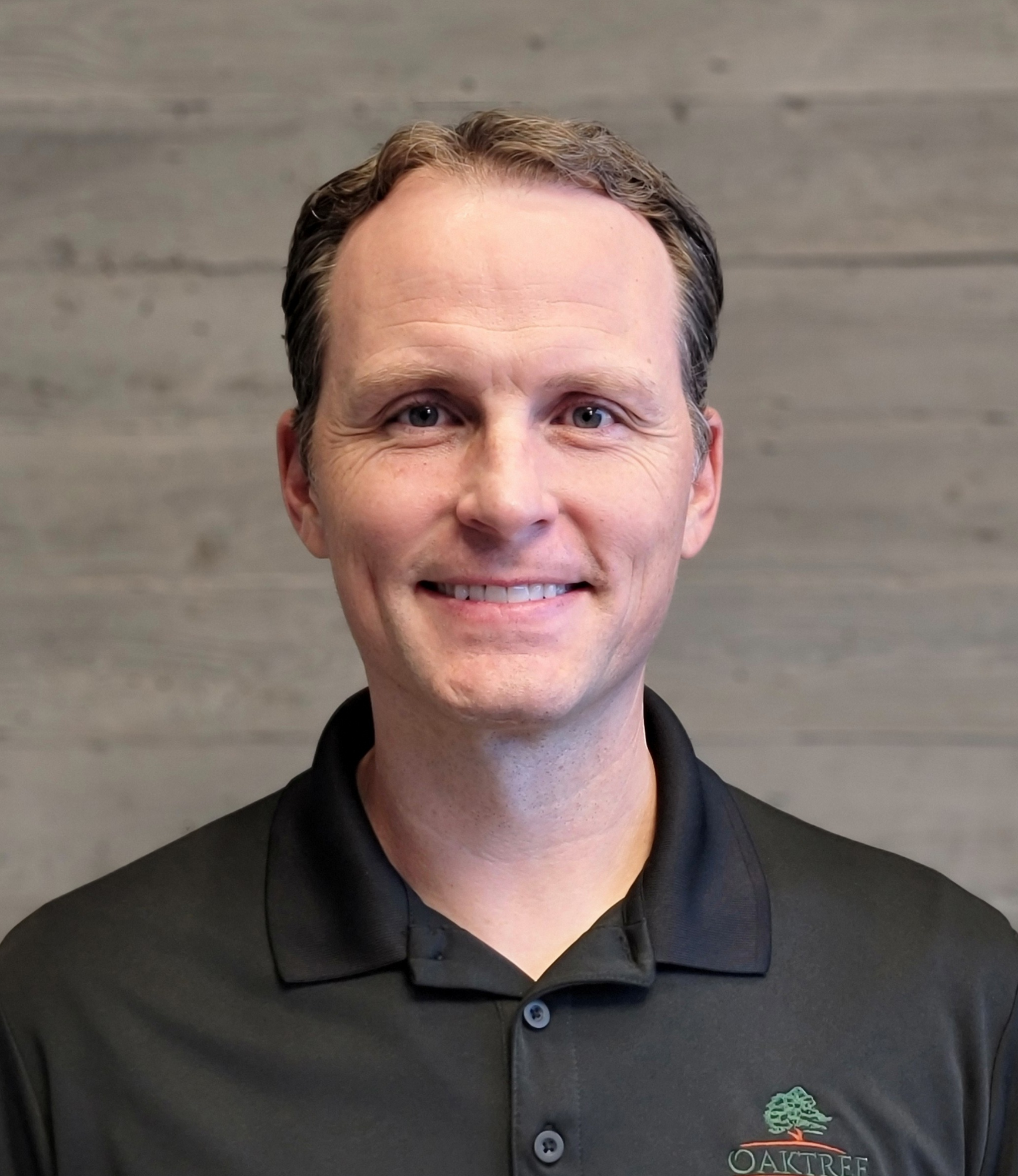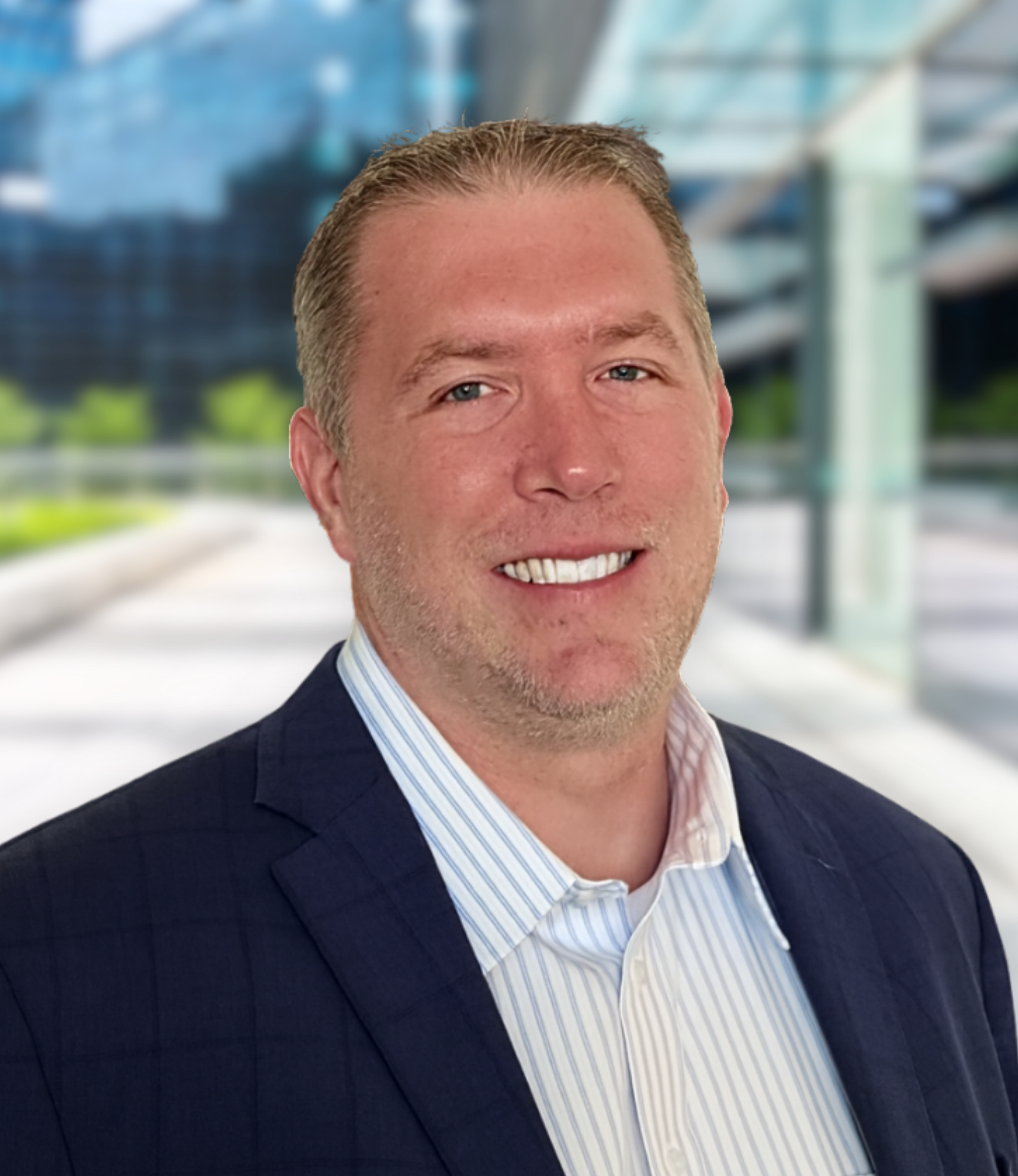
“It’s a weird thing when you first hear it − buy before you sell − but it’s happening more and more. People purchase a new property, leverage a bridge loan, and when that original property sells, the loan is resolved”
Aaron Wenger,
Oaktree Funding

“We’ve got an incredible team. Our average salesperson turnover is very low. There’s a reason for that − we’re a great business and a great place to work. Everyone here wants to get loans done”
Kristopher Martin,
Oaktree Funding

In Partnership with

Non-QM thrives even when rates rise
From self-employed borrowers to investors, Oaktree Funding is fueling the non-QM lending revolution
Read on


Kristopher Martin
Oaktree Funding Corp.


Aaron Wengert
Oaktree Funding Corp.



Industry experts

Oaktree Funding Corporation is a multi-state licensed mortgage banker headquartered in Chandler, Arizona. With over 35 years of industry experience, Oaktree provides a full spectrum of loan programs, including FHA, VA, USDA, jumbo, and non-QM products, through retail, correspondent, and wholesale channels. Recognized for competitive pricing, operational expertise, and innovative solutions, Oaktree serves borrowers who may not meet traditional underwriting standards. Approved by HUD, USDA, and VA, and supported by strong investor relationships, Oaktree has established itself as a trusted national lender with a reputation for reliability, flexibility, and long-standing contributions to the mortgage industry.
Find out more

Kristopher Martin is co-CEO of Oaktree Funding Corp., a leading non-QM wholesale lender. With over 20 years of experience in origination, underwriting, servicing, and asset management, he has executed thousands of transactions in the private credit and mortgage space. At Oaktree, Martin oversees investment strategy, credit policy, and loan acquisitions, ensuring disciplined underwriting and innovative non-QM products for brokers nationwide. He previously founded and led multiple successful lending platforms and developed Oaktree’s proprietary waterfall-based valuation methodology. Martin studied finance at Western International University and lives in Arizona with his wife, Terri, and their five children.
Oaktree Funding Corp.
Kristopher Martin

Aaron Wengert became part of Oaktree’s capital markets team in early 2024 and now manages the second lien production pipeline, which makes up roughly 15 percent of the firm’s total volume. He is responsible for developing programs, updating product matrices and guidelines, and creating performance dashboards to help several teams. Wengert also works with secondary market investors to explore new products and opportunities for Oaktree. With an MBA focused on business analytics from the University of Nebraska, he uses data-driven insights to find ways to improve operations and identify new growth areas.
Oaktree Funding Corp.
Aaron Wengert

In Partnership with

Fighting for
the customer
The customer owned a bank saw a huge boost after the Hayne Royal Commission. One year on and their market share is growing as customer continue to see their value.
Read on


Darren McLeod
Beyond Bank


Fernando Lemos
Bank Australia



Industry experts

Lorem ipsum dolor sit amet, consectetur adipiscing elit. Tellus in penatibus condimentum malesuada ante vulputate nisi, arcu leo. Amet urna sapien purus vestibulum fermentum a. Cursus metus massa donec sed varius. Nunc enim sit morbi lacus, molestie et nunc. Nullam sed facilisi id malesuada. Ante purus velit, quam scelerisque ultrices scelerisque donec.
Velit egestas vel ornare pellentesque ridiculus. Mauris tempor augue quis mattis suspendisse feugiat commodo posuere. Faucibus massa adipiscing nullam elit, ac vel accumsan. Phasellus eget ac dignissim fermentum ac placerat elit, metus. Nulla porttitor ante egestas molestie quis quam. Pharetra magna sit mauris tellus gravida rutrum libero sit. Justo orci cras euismod proin massa lorem ut. In non tellus phasellus faucibus ullamcorper nullam odio dui et.
Bank Australia
Fernando Lemos

Lorem ipsum dolor sit amet, consectetur adipiscing elit. Tellus in penatibus condimentum malesuada ante vulputate nisi, arcu leo. Amet urna sapien purus vestibulum fermentum a. Cursus metus massa donec sed varius. Nunc enim sit morbi lacus, molestie et nunc. Nullam sed facilisi id malesuada. Ante purus velit, quam scelerisque ultrices scelerisque donec.
Velit egestas vel ornare pellentesque ridiculus. Mauris tempor augue quis mattis suspendisse feugiat commodo posuere. Faucibus massa adipiscing nullam elit, ac vel accumsan. Phasellus eget ac dignissim fermentum ac placerat elit, metus. Nulla porttitor ante egestas molestie quis quam. Pharetra magna sit mauris tellus gravida rutrum libero sit. Justo orci cras euismod proin massa lorem ut. In non tellus phasellus faucibus ullamcorper nullam odio dui et.
Beyond Bank
Darren McLeod

In Partnership with

Fighting for
the customer
The customer owned a bank saw a huge boost after the Hayne Royal Commission. One year on and their market share is growing as customer continue to see their value.
Read on


Darren McLeod
Beyond Bank


Fernando Lemos
Bank Australia



Industry experts

Lorem ipsum dolor sit amet, consectetur adipiscing elit. Tellus in penatibus condimentum malesuada ante vulputate nisi, arcu leo. Amet urna sapien purus vestibulum fermentum a. Cursus metus massa donec sed varius. Nunc enim sit morbi lacus, molestie et nunc. Nullam sed facilisi id malesuada. Ante purus velit, quam scelerisque ultrices scelerisque donec.
Velit egestas vel ornare pellentesque ridiculus. Mauris tempor augue quis mattis suspendisse feugiat commodo posuere. Faucibus massa adipiscing nullam elit, ac vel accumsan. Phasellus eget ac dignissim fermentum ac placerat elit, metus. Nulla porttitor ante egestas molestie quis quam. Pharetra magna sit mauris tellus gravida rutrum libero sit. Justo orci cras euismod proin massa lorem ut. In non tellus phasellus faucibus ullamcorper nullam odio dui et.
Beyond Bank
Darren McLeod
Share


Share




Share




Lorem ipsum dolor sit amet, consectetur adipiscing elit. Tellus in penatibus condimentum malesuada ante vulputate nisi, arcu leo. Amet urna sapien purus vestibulum fermentum a. Cursus metus massa donec sed varius. Nunc enim sit morbi lacus, molestie et nunc. Nullam sed facilisi id malesuada. Ante purus velit, quam scelerisque ultrices scelerisque donec.
Velit egestas vel ornare pellentesque ridiculus. Mauris tempor augue quis mattis suspendisse feugiat commodo posuere. Faucibus massa adipiscing nullam elit, ac vel accumsan. Phasellus eget ac dignissim fermentum ac placerat elit, metus. Nulla porttitor ante egestas molestie quis quam. Pharetra magna sit mauris tellus gravida rutrum libero sit. Justo orci cras euismod proin massa lorem ut. In non tellus phasellus faucibus ullamcorper nullam odio dui et.
Bank Australia
Fernando Lemos
Published Oct 29, 2025









As Martin told MPA, in 2014, after the Dodd-Frank Act was released, Oaktree began offering non-QM loans − making them one of the first lenders to do so. Since then, they’ve seen a huge rise in volume, going from essentially 10 percent non-QM to almost 100 percent non-QM.
�“When you consider the trillions of dollars that are being funded in purchases or refinances on an annual basis, there’s been quite a significant increase in the space,” added Martin “We’re very excited to be a large part of the growth − it’s been a crazy ride over the last 10 years.”
Self-employed borrowers group growing steadily �And that growth really couldn’t have happened if trends had stayed the same in the non-QM space, or even if borrowers all boasted the same profile.
�“It’s neat to see that the self-employed borrowers group has been steadily growing,” said Wenger. “With COVID it peaked, and then it settled in a little bit, remaining steady at five to six percent. [What’s more], over the past three years or so, there’s been 21 million applications to the Small Business Administration to start new businesses. The beautiful part is that those people are going to be buying homes, refinancing homes, taking cash out, and doing all sorts of things. So the opportunity for non-QM is absolutely there.”��
Once seen as something of a niche in mortgage lending, the non-QM sector has fast become a viable solution for borrowers and brokers in the US. And in the coming years, the prominence of the market is only expected to thrive.
�With that in mind, Mortgage Professional America recently hosted an exclusive roundtable, bringing together two leading voices in the non-QM space − Kristopher Martin, co-chief executive officer at Oaktree Funding, and Aaron Wenger, capital markets analyst at Oaktree − to discuss and debate the challenges and opportunities this sector has to offer in 2026.
�“Oaktree Funding has been in business since 1989, so we’ve seen not only the ebbs and flows of the conforming mortgage markets and government loans but also the rise and fall of subprime,” began Martin. “I think a lot of people have gotten confused with non-QM being synonymous with subprime − they’re two completely different types of loan programs. While they share similarities − [namely,] that they’re privately securitized − they’re not the same.”�
Newsletter
About us
Authors
Privacy Policy
Conditions of Use
Terms & Conditions
Contact Us
Sitemap
RSS

Copyright © 1996-2025 KM Business Information US, Inc.




Newsletter
About us
Authors
Privacy Policy
Conditions of Use
Terms & Conditions
Contact Us
Sitemap
RSS

Copyright © 1996-2025 KM Business Information US, Inc.




News
MORTGAGE INDUSTRY
BEST IN MORTGAGE
SPECIALTY
TV
resources

US
CA
AU
NZ
UK

Copyright © 1996-2025 KM Business Information US, Inc.

Newsletter
About us
Authors
Privacy Policy
Conditions of Use
Terms & Conditions
Contact Us
Sitemap
RSS





US
CA
AU
NZ
UK
Resources
TV
News
Specialty
Best in Mortgage
Mortgage Industry
Amid those shifting perceptions, things are changing in the secondary markets too − especially when it comes to views on non-QMs. Wenger noted that he’s had the opportunity to have a lot of meaningful conversations in the capital markets space with big name investors. “Those are really cool calls to be on,” he said.
�Martin concurred, adding that a lot of insurance companies have been either buying directly or buying through intermediaries, especially when Treasury rates were higher.
�“[When] Treasury rates are higher, their annuity payments have to be higher,” he said. “[And] if their annuity payments are higher, that’s a liability for them. [As such,] they need these assets to offset these liabilities − they need the yield, �
and this is a safer way to get access to that yield. Some of the insurance companies are not allowed to buy anything sub-AAA bonds, but they can hold mortgage assets. So there’s different ways to get around [it].”
‘For property investors, it’s huge’�Looking at market sentiment, as non-QM interest continues to grow more and more, brokers are eyeing up the opportunities for themselves. As Martin explained, there’s a lot of opportunity out there right now, with non-QM lending opening the door for brokers to serve borrowers previously underserved by conventional guidelines.
�“Bank statement lending, self-employed borrowers − that’s going to be a huge part of the space going forward,” he said. “Not only can we qualify somebody with 12 or 24 months’ bank statements, we can use asset depletion. We’re not even calculating a debt-to-income ratio. We’re just doing a basic calculation on the assets they have versus the liabilities that they have. It’s outstanding.”�
And the investor segment, long constrained by traditional lending rules, is another area of rapid growth.
�“For property investors, it’s huge,” Martin continued. “We have DSCR loans, meaning they can qualify just on the subject property income versus their own borrower’s income. Granted, they have to have reserves and things like that, but there’s so many opportunities. I draw an example for loan officers who are trying to find a way to get more real estate business. What’s the best way to get a realtor to give you business? Give them business. I’ve got a borrower that’s done investment properties before. You find a property that pencils, they’ve got the cash to put down. Take those folks to the real estate agent and say, ‘Hey, you should go put an offer in on this property.’ That’s a great way to build rapport, and then they’ll bring you more deals.”�
Wenger added that beyond core products, the non-QM ecosystem is expanding into second liens and HELOCs at a remarkable pace.
�“We’ve seen just a dramatic increase in that production,” he said. “Investors are widening their credit boxes, increasing their loan amounts, and evolving the documentation types borrowers can qualify with. We’re seeing things like 1099-S, profit and loss statements − even on investment properties. There’s really a lot of opportunity on the second lien side, and we’ve seen that really boom here at Oaktree − especially this year.”
��
Rise of ‘buy-before-you-sell’�But this trend isn’t an outlier; it’s actually part of a broader evolution in how today’s market views risk, particularly in a rising home equity environment. While HELOCs are a massive trend right now, so too is the shift toward funding short-term rentals.
�“Everyone likes to get an Airbnb or a VRBO instead of a hotel,” added Wegner. “Well, people own those properties, and investors have realized that they need to accommodate short-term rental properties.”
�Another growing segment? Bridge loans, particularly in the “buy-before-you-sell” category.
“It’s a weird thing when you first hear it − buy before you sell − but �
it’s happening more and more,” Wegner said. “People purchase a new property, leverage a bridge loan, and when that original property sells, the loan is resolved.”
Martin also noted that Oaktree offers a version of the product designed to minimize friction for borrowers.
�“Somebody goes and puts an offer on a house, but they haven’t sold their old house yet. As long as they keep that property listed and intend to sell it, we’ll provide bridge financing for them. And there are no payments on that loan. That means they don’t have to qualify for a new payment on the new loan, which is fantastic. Once the property sells, it’s all done. It’s clean. So we’re going to continue to grow more niche products like this.”
�Looking toward the rest of 2025 and into 2026, Martin sees strong fundamentals for continued growth. He explained that as the sector sees interest rates go down, he expects volumes to increase.
�“We’ve been doing non-QM since 2014. And when we saw volumes really take off, believe it or not, was when rates were at an all-time low. So when rates are good, non-QM does well. But even when rates go up, non-QM still performs, because there’s always a niche that needs borrowing.”�
‘Don’t wait until later − start today’�For brokers entering the space now, Martin stressed the importance of understanding the process.
�“A lot of loan officers who’ve been in the industry five or six years never got into non-QM,” he said. “Everything was automated − put it in DU, see what comes out. But with non-QM, you’ve got to look at the income, look at the trade lines. The underwriting is manual, which actually gives you more flexibility and more chances for exceptions.
�“[At Oaktree], we do a tremendous amount of loan exceptions. If you’ve got a loan that doesn’t fit a box, we might still be able to do it. That’s one of the reasons we’ve become a go-to in this space. If you’re just getting started, you need to learn non-QM. If you’ve been around for �
10 years, you still need to learn it, because you’re missing one or two loans a month you could be closing.”
When asked for his closing message to brokers, Martin didn’t hesitate to emphasize his firm’s value proposition.
�“First of all, check out Oaktree. We’ve got an incredible team. Our average salesperson turnover is very low. There’s a reason for that − we’re a great business and a great place to work. Everyone here wants to get loans done.
�“Our underwriters aren’t allowed to turn down a loan on their own. They have to escalate it to their underwriting manager, and that manager has to take it further up the chain if they’re going to decline it. Everyone is incentivized to make loans happen − to find a way.”
�For his part, Wegner stressed the need for action, urging brokers to take advantage of the market in the coming months and years.
�“The market is increasing,” he said. “Be a part of that. Don’t wait until later − start today. One of the really neat things about Oaktree is we never stand still. We’re always asking, what new programs can we offer to help brokers attract more borrowers? We’ve got new stuff coming all the time. If you’re a broker with borrowers who don’t fit into a neat little box, we’ve got a program for most of them − if not all of them. And we’re excited to do business.”�
Source: SS&C
In 2024, non-QM lending represented approximately 5% of all originations
In 2025, non-QM lending is expected to reach 10−15% of the market
Non-QM market doubles
in 12 months
Source: Oaktree
Common-sense underwriting: Our team looks beyond the numbers and applies real-world logic to each file. We understand the entrepreneurial borrower and self-employed landscape.
�No overlays on key items: Where others might have layers of unnecessary restrictions, we streamline the process to get loans done faster and cleaner.
�Support you can count on: We pride ourselves on fast turn times, direct access to decision-makers, and a hands-on approach that helps loan officers close more deals − without surprises at the 11th hour.�
Non-QM market doubles
in 12 months



News
MORTGAGE INDUSTRY
BEST IN MORTGAGE
SPECIALTY
TV
resources

US
CA
AU
NZ
UK
